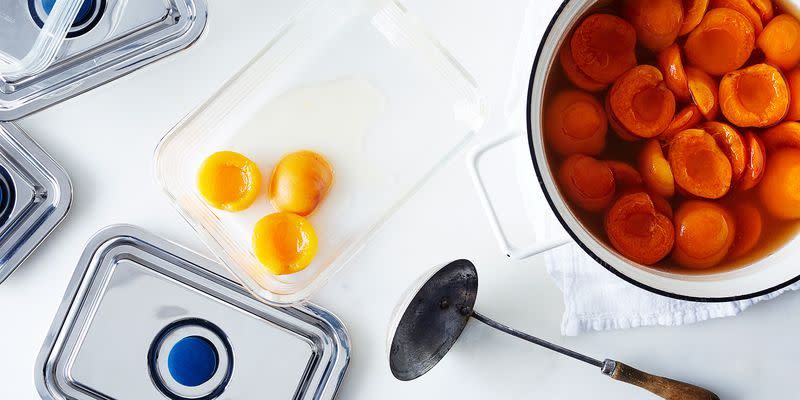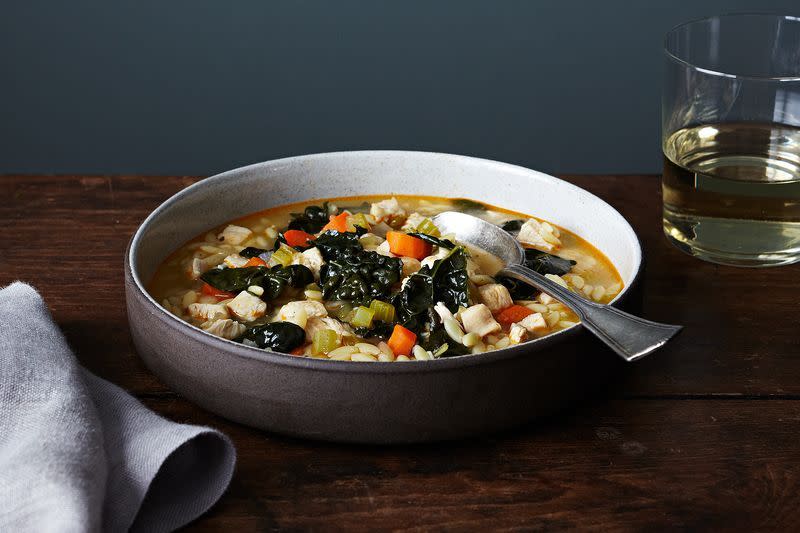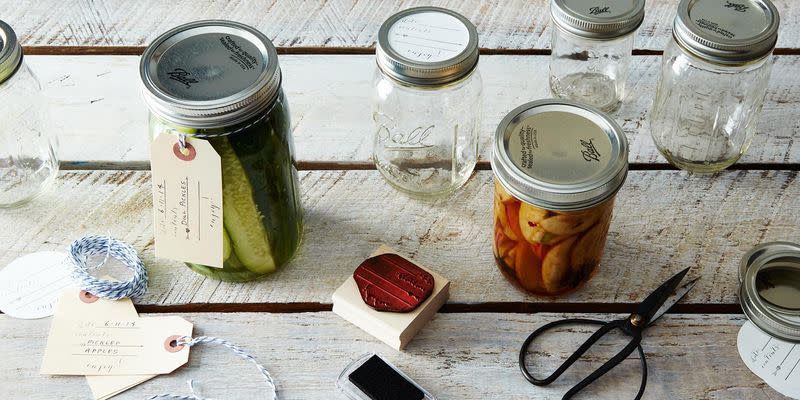10 Must-Do Steps for a Super Organized Fridge
We’ve been on a bit of an organizing kick lately, tidying up Kondo-style and making sure to maximize every inch of space. But somehow, we’ve yet to address one of the most critical spaces in our homes: the refrigerator.

A clean refrigerator = a happy home. (Photo: Mark Weinberg/Food52)
Related: Why You Should Run Your Kitchen Like a Test Kitchen
It’s arguably one of the most important appliances we own (aside from the oven and the coffee maker). We spend who knows how many hours opening and closing it, rifling through it, and simply standing in front of it. It holds both meaty mains and the vegetable makings of super salads. And yet, so many of us neglect it.
Over on the Hotline, LE BEC FIN is in search of the best practices to follow when cleaning out our refrigerators. How do we keep door storage from hosting a minefield of mostly-used marmalade? And what about that hodge-podge of leftover meals dominating prime, eye-level shelf space? We may be crippled by the current state of our crispers, but we don’t have to be.
Related: 4 Steps to a Clean, Organized Kitchen That Stays That Way

Stay organized. (Photo: Food52)
Use or freeze perishables
While no one offered a clear, universal rule for how long to keep one item or another, Nancy recommends only keeping perishable items (like cooked foods and open ingredients) between three and seven days, at which point it’s time to cook it, serve it, or freeze it. She even stores some things—like nuts, dried fruits, and uncooked meat or fish—in the freezer right from the get-go.
Related: 4 KonMari Solutions for Tidier Cookware Storage
Stacy agrees that the freezer is most definitely your friend when faced with perishing produce. It’s a-okay for onions, carrots, and celery to go in the freezer (even if they’re getting wilty) for future use in stocks or soups.
Lyndie keeps a large ziplock in the freezer just for vegetables headed passed their prime (and vegetable trimmings) for just that reason, taking it a step further by dedicating a second one for stock-worthy chicken bones.

Yes, you can freeze soup! (Photo: Alpha Smoot/Food52)
Deal with the dregs
Lyndie, too, plans dinners designed to use up random leftovers: “kitchen sink” soup, burritos, or grain bowls.
On another note, Antonia James addresses what to do with the teaspoon or two of remnants inevitably inhabiting the bottom of condiment jars. She combines the remains of complimentary products to create new spreads—like pickled plums and coarse-grain mustard—and uses the leftover brine from pickles to make a salad dressing, “often with a dab of whatever jam is down to dregs.”

When in doubt, label. (Photo: James Ransom)
Label everything
Mark Denner is all about using a Sharpie and white electrical tape to label leftovers in reusable containers with names and dates. He also organizes the fridge by designating areas for different goods so he always knows where to find what he’s looking for, and reminds us that it’s often possible to adjust shelf heights to accommodate different storage containers as needed.
Ktr is also into labels, but sticks with colored masking tape, freezer tape, or dissolving labels instead.
Most importantly, get rid of what you don’t need
Chef June regularly donates or shares unwanted (but still good) bottled or boxed items with neighbors.
Mark Denner makes another great point, saying, “the more food you’ll never eat that clutters your fridge and pantry, the less likely you are to be able to make use of the stuff you WILL eat. Also, if your fridge is neat and clean and full of stuff you WANT to cook with, you’re more likely to cook in general.” His solution? Just get rid of it: “Not labeled? Toss it. No clue what it is? Toss it. Don’t have a plan for something? Toss it. Ever so slightly dodgy? Toss it. Fridge overflowing? Be merciless.”
By Sarah E. Daniels

